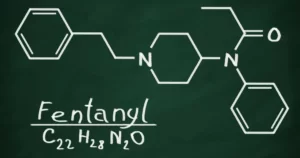 If you asked the average citizen to name some of the most dangerous drugs, heroin and morphine are likely to come up on the list, and with good reason. However, there is one drug that is 30 to 50 times more potent than heroin and 50 to 100 times more potent than morphine, and its name is not as likely to appear in many conversations about dangerous drugs. This drug is fentanyl. Here is some information about what it is and the penalties and sentences for importing and distributing fentanyl.
If you asked the average citizen to name some of the most dangerous drugs, heroin and morphine are likely to come up on the list, and with good reason. However, there is one drug that is 30 to 50 times more potent than heroin and 50 to 100 times more potent than morphine, and its name is not as likely to appear in many conversations about dangerous drugs. This drug is fentanyl. Here is some information about what it is and the penalties and sentences for importing and distributing fentanyl.
What is Fentanyl?
According to the Drug Enforcement Agency’s (DEA) FAQ page, fentanyl is an opioid used to relieve pain. It binds opium receptors in the brain and raises serotonin levels. This can give users a sense of euphoria, but it also risks respiratory arrest in even small amounts. Fentanyl is extremely addictive, and it kills.
Fentanyl and its analogs are driving forces of both the opioid crisis and the heroin epidemic. In 2017, The Chicago Tribune reported that the Centers for Disease Control and Prevention found a 66% increase in Illinois emergency room visits for opioid overdose. This included fentanyl on its own and heroin cut with Fentanyl for potency.
The United States Controlled Substances Act uses a system of “schedules” as a means of classifying drugs and other substances into different levels based on their “potential for abuse,” addictiveness and usefulness for medical purposes. For example, Schedule V substances are low in addictiveness and abuse potential, and they are definitely acceptable for medical use. This act classifies fentanyl as a Schedule II substance.
Schedule I, on the other hand, consists of the hardest, most addictive, and most lethal drugs. Despite what the US Controlled Substances Act ruled, the Illinois Controlled Substances Act – which also classifies drugs with the aforementioned “schedule” system – has legislated differently. It states that under Illinois law, fentanyl falls squarely into Schedule I – a designation it shares with heroin, morphine, and cocaine. The state of Illinois takes fentanyl seriously and treats people involved in importing and distributing fentanyl with severity.
What Happens If I’m Caught With Fentanyl?
The penalties for importing, distributing, and any other drug crime in Illinois depend on certain factors. Among them is the schedule classification for the substance: Schedule V substances have lighter penalties for distribution than, say, heroin. Because this drug is Schedule I, the most severe classification, fentanyl and heroin charges (as well as morphine and cocaine charges) have similar penalties.
This brings us to another significant factor in how courts punish people for drug crimes: the amount of the substance involved. When it comes to manufacturing, delivery, or possession of fentanyl with intent of doing either, these are the penalties listed in 720 ILCS 570/401:
- If you are convicted of having 15 to 99 grams of a substance containing fentanyl for any of the reasons above, you face six to 30 years in prison.
- Getting caught with 100 to 399 grams may warrant a sentence of nine to 40 years in prison.
- 400 to 899 grams would raise the minimum prison sentence to 12 years and the maximum to 50 years.
- Having any amount of a substance containing fentanyl above and including 900 grams could land you in prison for anywhere between 15 and 60 years.
If you or a loved one are currently facing charges related to importing and distributing fentanyl, contact the experienced drug crime attorneys at Mitchell S. Sexner & Associates LLC. Our criminal defense lawyers understand the seriousness of these charges and the severity of the potential penalties, and we will fight aggressively on your behalf. Call us today at (312) 644-0444 for a free consultation.

